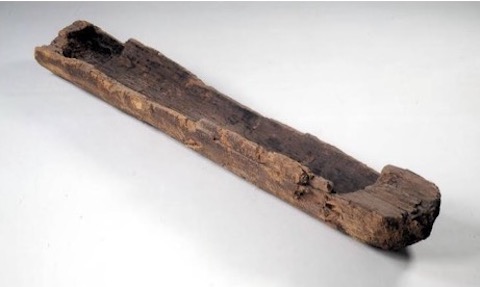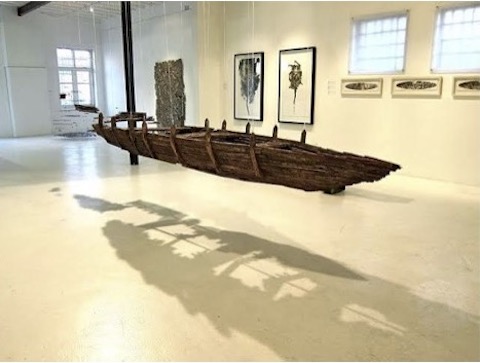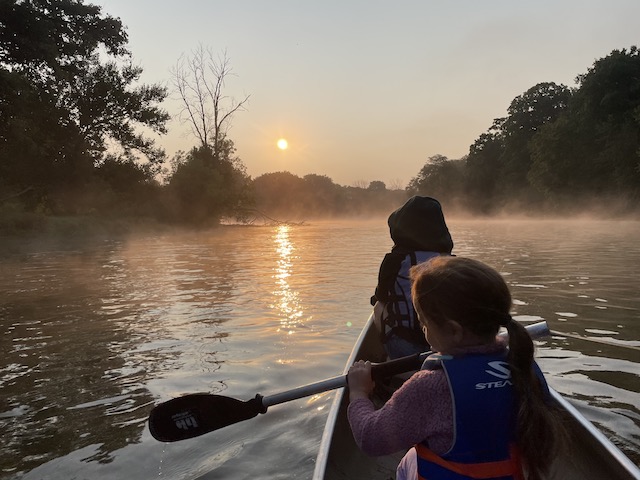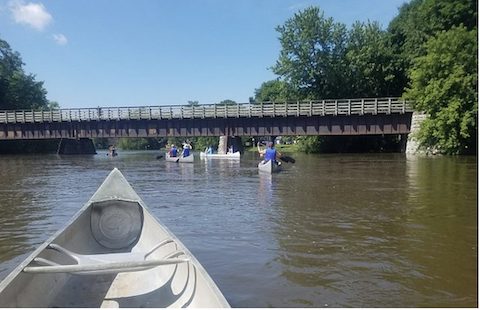It’s an early morning, the sun is just up, and the water looks like a sheet of glass as you slide onto the surface. The only sounds are the birds, an occasional fish breaking the surface, and some droplets off your paddle as you move the blade to the front. It’s a memorable experience, one you’ve had many times, if you’re one of the lucky ones. Perhaps it’s your first time, but you’re now addicted, you’re going to desire more. Moments like this are so extraordinary – whether you’re surrounded by Kevlar®, carbon fiber, fiberglass, aluminum, or cedar strip – it makes no difference. Moving along the water you take in the natural surroundings, all while navigating your best course and avoiding obstacles in your path.
Ever wonder about who came this way before? How many paddled the same area? Who was the last solo traveler, the last group with a guide, perhaps a group of scouts? Were they sightseeing or possibly fishing, and what did they catch? Today you’re in a craft that draws only a couple inches of water and skims across the surface with relative ease. What about those who preceded you decades ago? How different was their paddle from the one you have today? What about people from hundreds or thousands of years before?

The earliest known canoes, the Pesse canoe and Dufuna canoe, respectively have both been carbon dated to 8500-7500 BC. The Pesse canoe was little more than a Scotch Pine log that was hollowed out for carrying its occupants and their belongings, possibly used to fish or for transporting game. Was it an easier way to get to another settlement, perhaps all of that and more? Another canoe find was dated 5500-5000 BC. Judging from nearby food remains, including pike, the canoe was used for fishing. Surely these were not the earliest canoes, just the earliest that have been discovered. The Dufuna from Africa was a dugout canoe; the oldest known dugout canoe in North America dated to 6,000 years old was discovered in the northeast United States. In the Midwest region, the oldest known canoe was discovered in Lake Mendota, in Madison, Wisconsin and dated to 3,000 years old.

Yobe State capital, built by the National Commission for Museums and Monuments.
Both of these crafts and others of the period must have been a great leap forward in assisting movement of people in their search for food, travel, and exploration. These canoes, crude in comparison to today’s, advanced the quality of life. People could get closer to food sources and transport their catch back to a village much easier. They also enabled easier transportation to other settlements, allowing for trade with others.
Since then, people settled by water for that resource and the other life it attracted for food. Our waterways were the early connection to the rest of the world. Streams were the highways, a connection to the next settlement and beyond. Since that first documented canoe, some 9,500 – 10,500 years ago, we have better tools, dugouts were better shaped, instead of rounded and somewhat blunt ends, they could be tapered for easier maneuverability. By making the side walls and bottom thinner, capacity increased, but improvements did not end there.
Later canoes were constructed of animal skins, sewn together, and stretched over a wooden frame, dried, and then covered with animal fat to make them water resistant. Plank canoes were built more in the coastal areas. These were large crafts, able to transport more people and cargo, and even travel across open water safely. Outriggers also came into use, both plank and outrigger styles were sometimes fitted with sails.
Native Americans, beginning in Pre-Columbian times, constructed canoes using birch bark over wooden frames. Those crafts were the precursors to our modern canoes. From there, other materials were used: canvas, strips of wood (cedar); after the mid-1940’s there was a move to plastic. Since then, there have been newer material builds of aluminum, fiberglass, and a mix of different modern composite materials with epoxy resins. They paddle easily, are relatively light for carrying on a portage, and are both flexible and durable.
No matter what materials your canoe is constructed of, it’s connected to those that paddled before us. It also connects you with nature around us; enjoying that firsthand is always special. Leave the phone at home or in the dry bag at least. Same with the music, you won’t need it. Wildlife will provide you with plenty of listening pleasure. Immerse yourself, be in the moment, make memories. Get out and paddle!
And take a moment to get a ticket for our current canoe raffle, details and ticket info here.



